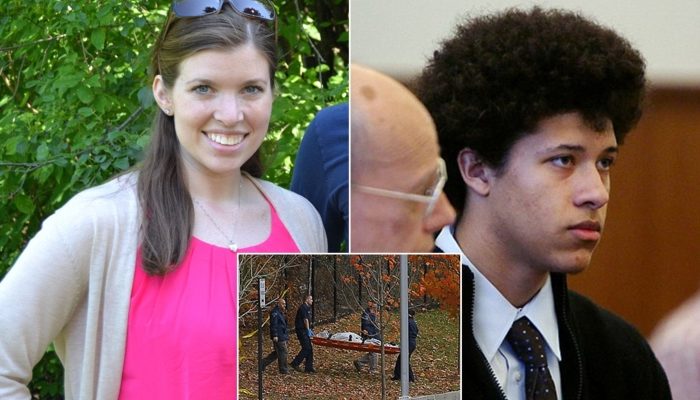In the quiet metropolis of East Moline, Illinois, the homicide of teen Adrianne Reynolds shook the network to its middle. What started as a normal day at a local Taco Bell led to tragedy, leaving behind a path of surprise and disbelief. The brutal killing of Adrianne Reynolds orchestrated via her classmates Sarah Kolb and Cory Gregory, captured countrywide attention and raised troubling questions about youth violence and the darkish underbelly of youngster social dynamics.
The Life of Adrianne Reynolds:
Adrianne Reynolds’s lifestyle change is marked using willpower and ambition, characterized using her relentless pursuit of a brighter future. Originally hailing from Kilgore, Texas, Adrianne made the bold selection to relocate to East Moline, Illinois, at the age of sixteen. Her aspiration? To join the ranks of the US Marines. Arriving in East Moline, Adrianne quickly set her attraction on her educational desires, enrolling in the Black Hawk College Outreach Center. It turned right here that she commenced her adventure to earn her General Educational Development (GED) certificates—a crucial step toward her dream of military service.
Despite the demanding situation of adjusting to new surroundings, Adrianne embraced her studies with power and backbone. Her tenacity and resilience have been evident to those around her, earning her admiration and recognition amongst her friends and teachers alike.
However, Adrianne’s route would intersect with individuals whose reasons would ultimately result in her tragic demise. Among them have been Sarah Kolb and Cory Gregory, fellow students at the Outreach Center whose movements might all the time modify the course of Adrianne’s life.
The Perpetrators: Sarah Kolb and Cory Gregory:
Sarah Kolb: The Popular Girl Turned Murderer:
Sarah Kolb was a prominent parent in the Black Hawk College Outreach Center, regarded for her outgoing persona and social prowess. Residing in the nearby metropolis of Milan, Illinois, Sarah’s life was regarded to be that of a standard teen—till jealousy and resentment took hold. Sarah’s relationship with Adrianne Reynolds changed into fraught with anxiety, allegedly stemming from jealousy over Adrianne’s interactions with Cory Gregory, Sarah’s former boyfriend and dear friend.
Reports propose that Adrianne’s romantic hobby with Cory may additionally have been the catalyst for Sarah’s animosity closer to her. Despite outward appearances, Sarah harbored deep-seated feelings that could eventually boil over right into a violent war of words at a local Taco Bell—a war of words that could culminate in Adrianne’s tragic death.
Cory Gregory: The Accomplice with a Guilty Plea
Cory Gregory, as soon as a chum and confidante of Sarah Kolb, located herself entangled in a web of deceit and betrayal. As a Juggalo—a lifestyle related to the song of the Insane Clown Posse—Cory’s identification became intertwined with an experience of belonging and camaraderie. However, Cory’s loyalty might be tested while Sarah’s jealousy towards Adrianne reaches a breaking factor. Despite her initial involvement in the events leading up to Adrianne’s murder, Cory in the long run pleaded responsibility to all expenses towards her, accepting responsibility for her role in the heinous crime.
The Murder of Adrianne Reynolds:
The homicide of Adrianne Reynolds on January 21, 2005, stands as a harrowing testimony to the depths of human depravity and the tragic effects of unchecked aggression. What commenced as an everyday outing for lunch at Taco Bell would devolve into an awful act of violence that might surprise the network of East Moline and reverberate throughout the nation.
On that fateful afternoon, Sarah Kolb extended an invitation to Adrianne Reynolds to join her and some others for lunch at the nearby Taco Bell. Little did Adrianne understand that this seemingly innocuous invitation might lead to her premature loss of life. Upon arrival at the restaurant, tensions quickly escalated between Sarah and Adrianne, reportedly fueled by Sarah’s jealousy over Adrianne’s interactions with Cory Gregory. As the altercation intensified, Cory intervened, restraining Adrianne even as Sarah seized a belt and proceeded to strangle her.
Despite the desperate pleas of onlookers, consisting of another pal named Sean McKitrick who in the long run fled the scene in horror, the violence persevered unabated. In a reply of moments, Adrianne’s existence became cruelly snuffed out, leaving her at the back of a path of devastation and despair.
Following the homicide, Sarah and Cory launched into a series of inaccurate tries to hide their heinous deed. Transporting Adrianne’s frame to Sarah’s grandparents’ farm in Aledo, Illinois, they sought to take away the proof by burning it with fuel. When their efforts proved futile, they enlisted the assistance of Nathan Gaudet, a 16-year-old boy from Moline, to help in dismembering Adrianne’s stays. Using a handsaw borrowed from Nathan’s grandfather, they gruesomely removed Adrianne’s head and palms, sealing her fate in a macabre act of desecration.
In the days that accompanied, Adrianne’s absence raised alarm bells amongst her loved ones, prompting her mother and father to file for her. It wasn’t lengthy before the government had been caused by the awful discovery of Adrianne’s stays on January 26, 2005, thanks in part to the testimony of Cory Gregory. The revelation of Adrianne’s tragic destiny sent shockwaves through the community, leaving citizens reeling in disbelief and horror. As info of the grisly murder emerged, the collective grief and outrage had been palpable, underscoring the importance of the mindless violence that had claimed Adrianne’s life.
Arrests, Trials, and Sentencing:
On February 1, 2005, Sarah Kolb and Cory Gregory were apprehended and charged with two counts of first-diploma homicide and concealment of a murder. The weight of those fees contemplated the severity of their movements and the heinous nature of Adrianne’s homicide. Sarah Kolb’s trial started on October 31, 2005, at the Rock Island County Courthouse, marking the beginning of a protracted legal warfare. Despite compelling evidence provided by the prosecution, along with testimony from witnesses and forensic professionals, the trial ended in a mistrial because of a hung jury.
Undeterred, prosecutors pursued a retrial, which started on February 6, 2006, in Dixon, Illinois. This time, the jury lowered back a unanimous verdict, locating Sarah guilty on all counts. The retrial not only underscored the tenacity of the prosecution but also highlighted the resilience of the prison device in the face of adversity. In contrast, Cory Gregory chose to plead guilty to all charges against her, sparing herself from the uncertainty of a tribulation. Her choice to simply accept obligation for her function in Adrianne’s murder was met with a next sentencing, reflecting the gravity of her movements.
Sarah Kolb, convicted on all counts, confronted the full force of the regulation at her sentencing hearing. The presiding choice exceeded a sentence of 48 years in jail for murder and an extra five years for concealment, to be served consecutively. This verdict served as a testimony to the severity of Sarah’s crimes and the irreparable harm inflicted upon Adrianne and her loved ones. Similarly, Cory Gregory acquired a sizable prison sentence for her complicity in Adrianne’s murder. With a guilty plea on the document, Cory was sentenced to 40 years in prison for murder and an extra 5 years for concealment. The sentences imposed on both Sarah and Cory meditated the gravity of their crimes and served as a degree of accountability for their moves.
In evaluation, Nathan Gaudet, who aided in the disposal of Adrianne’s remains, received a juvenile sentence of 5 years for his role in the crime. While his punishment was less severe than that of Sarah and Cory, it underscored the outcomes of his involvement in the tragic activities that unfolded.
Impact and Legacy:
The brutal nature of Adrianne’s homicide dispatched shockwaves through East Moline and the past, shattering the illusion of protection and calmness that citizens had once taken for granted. The near-knit network was left reeling in disbelief, grappling with the cruel truth of violence in their midst. Adrianne’s tragic loss of life served as a warning call, prompting a heightened cognizance of the prevalence and outcomes of teenage violence. Her story shed light on the complexities of adolescent relationships and the destructive power of unchecked aggression, prompting soul-searching and introspection among dad and mom, educators, and network leaders.
In the aftermath of Adrianne’s homicide, the quest for justice has become paramount. The arrest, trials, and sentencing of these responsible supplied a measure of closure for Adrianne’s loved ones, imparting a semblance of solace in the face of not possible loss. Yet, the scars left behind by her untimely loss of life serve as a poignant reminder of the long-lasting effect of violence on people and communities. Despite the darkness that enveloped her very last moments, Adrianne’s reminiscence endures as an image of resilience and power. Her unwavering willpower to pursue her goals serves as a thought to all who knew her, embodying the spirit of perseverance in the face of adversity.
As we reflect on the legacy of Adrianne Reynolds, we are reminded of the significance of fostering environments of aid and empathy for all individuals, especially inclined youth. By addressing the basic causes of violence and promoting avenues for warfare decisions and intervention, we can try to prevent similar tragedies from taking place inside destiny.
Additional Tips:
- Recognize Warning Signs: Encourage vigilance and cognizance of capability warning symptoms of teen violence, including unexpected adjustments in conduct, isolation, or expressions of aggression. Prompt intervention and guidance can prevent escalations of struggle before they flip tragic.
- Promote Conflict Resolution Skills: Emphasize the importance of healthy communique and warfare decision abilities amongst children. Providing sources and steering on navigating interpersonal conflicts constructively can empower younger human beings to clear up disputes without resorting to violence.
- Support Victims of Bullying: Address the pervasive problem of bullying in colleges and groups by enforcing complete anti-bullying projects. Create secure areas for victims to seek assistance and steerage, and teach friends about the negative consequences of bullying conduct.
- Encourage Reporting of Concerning Behavior: Foster a culture of responsibility by encouraging people to document regarding conduct to the government or rely on adults. Establish clear channels for reporting, making sure confidentiality and safety for those who come ahead with records.
- Raise Awareness of Available Resources: Educate individuals approximately the resources and assist services available to sufferers of violence and their households. Ensure accessibility to crisis hotlines, counseling offerings, and legal assistance for those in need of help.
Conclusion:
In the end, the murder of Adrianne Reynolds serves as a haunting reminder of the devastating results of unchecked aggression and jealousy among teenagers. Adrianne’s promising existence was tragically cut short, leaving a profound void within the hearts of her loved ones and the network of East Moline. The arrests, trials, and sentencing of these accountable provide a semblance of justice, however, they cannot undo the irreparable damage inflicted upon Adrianne and her circle of relatives. As we mirror her legacy, allow us to commit to fostering environments of assistance, empathy, and battle resolution for susceptible adolescents. By addressing the root causes of violence and promoting intervention and prevention strategies, we can honor Adrianne’s memory and try toward a future unfastened by senseless tragedies. May her story catalyze change and inspire us to work tirelessly toward growing safer, more compassionate groups for all.
FAQs:
Q1: What happened to Adrianne Reynolds?
Ans: Adrianne Reynolds, a teenager from East Moline, Illinois, was brutally murdered on January 21, 2005, by her classmates Sarah Kolb and Cory Gregory. She became strangled to loss of life during an altercation at a neighborhood Taco Bell and her body was later dismembered and disposed of.
Q2: Who have been the perpetrators of Adrianne Reynolds’s homicide?
Ans: Sarah Kolb and Cory Gregory, fellow students at the Black Hawk College Outreach Center, were liable for Adrianne’s murder. Sarah strangled Adrianne while Cory restrained her for the duration of the fatal altercation.
Q3: What changed into the purpose behind Adrianne Reynolds’s homicide?
Ans: The motive in the back of Adrianne’s murder became allegedly rooted in jealousy and resentment. Sarah Kolb, reportedly jealous of Adrianne’s interactions with Cory Gregory, orchestrated the violent war of words that in the long run caused Adrianne’s death.
Q4: What were the felony court cases following Adrianne Reynolds’s murder?
Ans: Sarah Kolb and Cory Gregory had been arrested and charged with first-degree murder and concealment of a murder. Sarah’s trial led to a mistrial earlier than she in the long run convicted in a retrial. Cory pleaded guilty to all costs against her.
Q5: What have been the sentences for Sarah Kolb and Cory Gregory?
Ans: Sarah Kolb was sentenced to 48 years in jail for homicide and an extra five years for concealment, to be served consecutively. Cory Gregory acquired a sentence of 40 years in prison for homicide and 5 years for concealment.
READ MORE: The Shocking Randy Stone Murder Case (A Tale of Betrayal and Tragedy)








